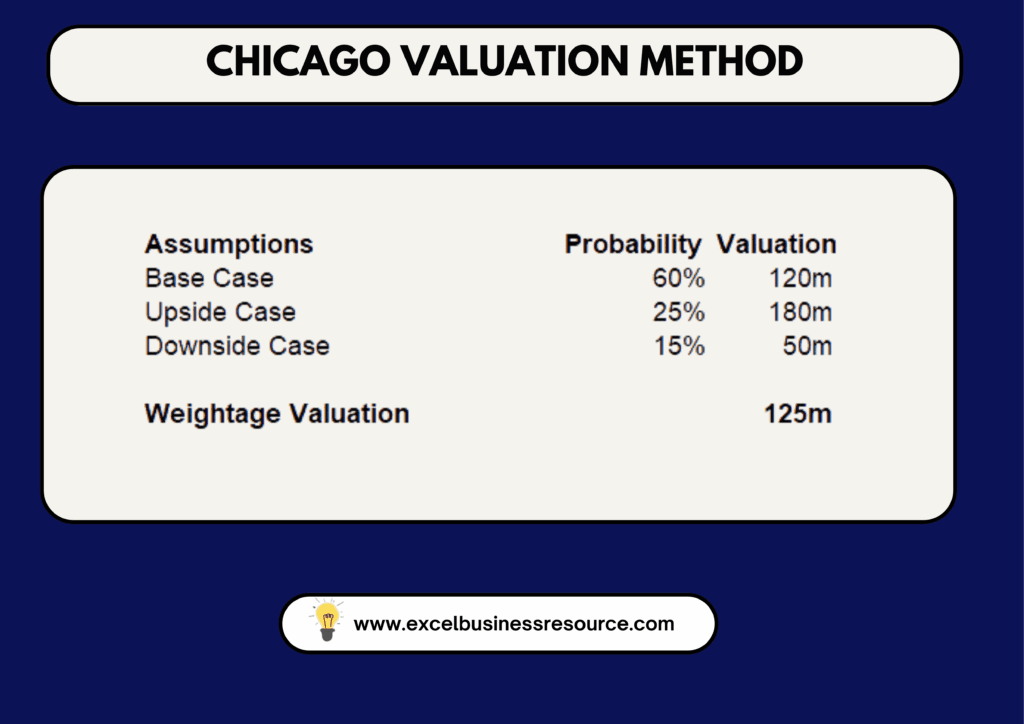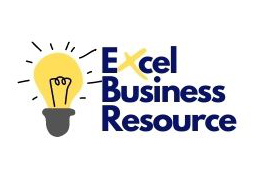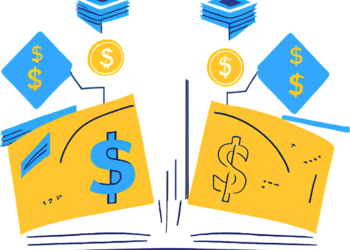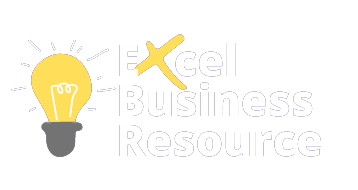What is the First Chicago Method for Startup Valuation?

Startup valuation is one of the most critical aspects for founders and investors when raising or investing money. Accurately valuing a startup isn’t just about the numbers, but it is about understanding the potential of an idea and balancing the risks involved. One valuation technique that stands out is the First Chicago Method, often used by venture capitalists (VCs) and private equity firms to assess the worth of early-stage companies.
In this article, we’ll break down what the First Chicago Method is, why it’s important, how it works, and why it has become a go-to venture capital valuation method.
What is the First Chicago Method?
The First Chicago Method is a business valuation approach that integrates elements of both multiples-based valuation and discounted cash flow (DCF) analysis. Developed by the venture capital arm of the First Chicago Bank in the 1970s, this method evaluates a company’s value by considering different future scenarios:
- Best-Case Scenario: Assumes the company achieves exceptional success, leading to high revenues and market dominance.
- Base-Case Scenario: Represents the most likely outcome, with steady growth and moderate market share.
- Worst-Case Scenario: Considers the possibility of failure or minimal success, resulting in low revenues or losses.
Why is Startup Valuation Important?
Before we get into the First Chicago Method, let’s talk about startup valuation in general. When a startup is seeking funding, its valuation determines how much equity an investor gets for their money. A high valuation means the startup gives up less equity, while a low valuation might mean more equity is sold to raise the same funds.
Established firms differ significantly because startups often do not have meaningful operating histories, consistent revenues, or even profits. Thus, these companies become more difficult to value. More often than not, traditional valuation techniques like DCF model or market multiples fail.
Here lies the brilliance of the First Chicago Method since it tends to present a dynamic, adaptive nature to the entire valuation process.
Steps Involved in the First Chicago Method
1. Developing Future Scenarios
Begin by outlining three potential future scenarios for the startup:
- Best-Case Scenario: For instance, the startup overtakes expectations and becomes the market leader, scaling worldwide with a strong financial outlook. Revenue and profit expectations are optimistic in this regard.
- Base-Case Scenario: This is a middle-of-the-road scenario based on steady growth, achieving milestones that are achievable and neither overly optimistic nor pessimistic.
- Worst-Case Scenario: This considers the potential struggle in terms of market competition, financial difficulties, or other risks. Revenue might be stagnant, or the business might fail at last. This requires careful analysis of market trends, the competitive landscape, and the strategic positioning of the startup.
2. Estimating Financial Projections
For each scenario, develop financial forecasts including:
- Revenue Projections: Estimated sales figures over a specific period.
- Expense Estimates: Projected operational costs and capital expenditures.
- Cash Flow Analysis: Anticipated cash inflows and outflows.
These projections form the basis for further valuation calculations.
3. Calculating Terminal Value
Determine the company’s terminal value at the end of the forecast period for each scenario. This is often done using valuation multiples such as:
- Revenue Multiples: Applying industry-specific multipliers to projected revenues.
- Earnings Multiples: Using multipliers based on earnings before interest and taxes (EBIT).
Selecting appropriate multiples requires benchmarking against comparable companies in the same industry and stage of development.
4. Discounting Cash Flows
Discount the projected cash flows and terminal value for each scenario to their present value using a discount rate that reflects the investment’s risk profile. This process accounts for the time value of money and investment risk.
5. Assigning Probabilities
Assign a probability to each scenario based on its perceived likelihood. For example:
- Best-Case: 30% probability.
- Base-Case: 50% probability.
- Worst-Case: 20% probability.
These probabilities should be determined through careful consideration of market conditions, competitive environment, and the startup’s business model.
6. Calculating the Weighted Average Valuation
Multiply the present value of each scenario by its assigned probability and sum the results to obtain the overall valuation:
Weighted Average Valuation = (Best Case PV × Probability) + (Base Case PV × Probability) + (Worst Case PV × Probability)
This calculation provides a single valuation figure that incorporates multiple potential outcomes.

Advantages of the First Chicago Method
Comprehensive Analysis
- Evaluates multiple outcomes, not just a single projection.
- Accounts for uncertainties and varying market conditions.
Realistic and Balanced
- Provides a balanced view by including downside risks.
- Helps in setting achievable milestones for the startup.
Tailored for Startups
- Works for both early-stage startups and those with moderate traction.
- Especially valuable for industries with high volatility or fast-changing dynamics.
Risk Assessment
- Investors can prepare for potential losses while identifying high-reward scenarios.
- Startups can build a stronger case for funding by presenting all potential outcomes.
Limitations of the First Chicago Method
Despite its advantages, this method has some challenges:
Complexity
- Requires extensive forecasting and scenario-building.
- Startups may need expert help to construct detailed financial models.
Data Limitations
- Difficult to find accurate comparable transaction data for terminal value estimation.
- Projections are only as reliable as the assumptions used.
Subjectivity
- Assigning probabilities to scenarios can be influenced by personal bias.
- Choosing the right discount rate is often more art than science.
Comparison with Other Valuation Methods
First Chicago Method vs. Discounted Cash Flow (DCF)
- First Chicago Method: Uses multiple scenarios, making it more suitable for startups with uncertain futures.
- DCF: Relies on a single projection, which can be overly optimistic or pessimistic.
First Chicago Method vs. Market Multiples
- First Chicago Method: Provides a deeper analysis by incorporating scenario-based probabilities.
- Market Multiples: Quick and straightforward but lacks depth and doesn’t account for variability in outcomes.
Practical Tips for Using the First Chicago Method
Consider a startup, developing a new software platform. Using the First Chicago Method, the valuation process might involve:
Scenario Development:
- Best-Case: Rapid adoption, leading to $50 million in revenue by year five.
- Base-Case: Moderate growth, achieving $20 million in revenue by year five.
- Worst-Case: Market challenges result in only $5 million in revenue by year five.
Financial Projections:
For each scenario:
-
- Best-Case: Projected annual growth rate of 50%, leading to $50 million revenue and $15 million in net profit by year five.
- Base-Case: Steady growth of 25%, resulting in $20 million revenue and $5 million net profit by year five.
- Worst-Case: Slower adoption with flat growth, achieving only $5 million revenue and negligible profit.
Terminal Value Calculation:
Assume the following multiples for terminal value estimation:
- Best-Case: 8x EBIT (Earnings before Interest and Taxes), leading to a terminal value of $120 million.
- Base-Case: 5x EBIT, leading to a terminal value of $25 million.
- Worst-Case: No EBIT, resulting in a terminal value of $0.
Discounting Cash Flows:
Using a discount rate of 20% (reflecting the high-risk nature of the startup), calculate the present value (PV) of cash flows for each scenario:
- Best-Case PV: $80 million.
- Base-Case PV: $18 million.
- Worst-Case PV: $0.
Assigning Probabilities:
Based on market research and competitive analysis:
- Best-Case Probability: 30%.
- Base-Case Probability: 50%.
- Worst-Case Probability: 20%.
Weighted Average Valuation:
Combine the valuations:
Weighted Average Valuation = (80×0.3) + (18×0.5) + (0×0.2) = 24 + 9 = $33 Million.
The final valuation for Startup would be $33 million, reflecting a balance of potential outcomes.
Tips for Founders Using the First Chicago Method
Prepare Detailed Scenarios:
Use market data and industry trends to craft realistic projections.
Leverage insights from competitors and comparable startups.
Use Startup Financial Model Templates:
Simplify calculations and ensure consistency across scenarios.
Include detailed revenue streams, cost structures, and funding requirements.
Be Transparent:
Share the assumptions behind your projections during investor presentations.
Highlight your rationale for assigning probabilities to each scenario.
Incorporate Industry Benchmarks:
Use relevant multiples from recent startup transactions in your sector.
Highlight why your business deserves specific multiples.
Tips for Investors Using the First Chicago Method
Scrutinize Assumptions:
Evaluate the startup’s projections for plausibility and alignment with market trends.
Challenge overly optimistic best-case scenarios.
Focus on Risk Mitigation:
Pay close attention to the worst-case scenario to assess the downside risk.
Look for startups with realistic base-case assumptions.
Compare Across Opportunities:
Use the method to compare valuations across multiple startups in your portfolio.
Assess which startups provide the best balance of risk and reward.
Adjust Discount Rates Thoughtfully:
Higher discount rates for early-stage startups with higher risks.
Lower rates for startups with proven traction and stable growth.
Conclusion
The First Chicago Method is a highly effective VCs valuation technique for startups, offering a structured approach to navigating uncertainty. By incorporating best-case, base-case, and worst-case scenarios, it provides a balanced view of a company’s potential.
For startup founders, this method is a way to craft a compelling narrative that aligns with investors’ expectations. For investors, it provides the tools to make informed decisions in the high-risk, high-reward world of startup investing.
By adopting the First Chicago Method, you’re not just valuing a business, but you’re understanding its future potential. Whether you’re a founder preparing for fundraising or an investor exploring opportunities, mastering this technique is a step toward smarter decision-making in the startup ecosystem.
-
What is Rule of 40 in SaaS? A Guide to Balancing Growth and Profitability
The SaaS industry is a battlefield where growth and profitability often pull businesses in opposite directions. As a founder or leader, you’ve likely asked yourself, should I focus on scaling faster or turning a profit? It’s a tough call. One wrong move and you risk burning cash too quickly or losing your competitive edge.Here’s the
January 27, 2025 Read more -
Pre-Money vs Post-Money Valuation: Understand Startup Funding like a Pro
You’re pitching to a group of venture capitalists, excited about the prospect of raising capital to launch your dream company. They ask you, “What’s your valuation? Suddenly, you’re faced with questions about ownership percentages, equity stakes, and terms you may not fully understand. Perhaps the most frequent pitfall facing founders is the understanding of pre
January 27, 2025 Read more -
How to Increase Profitability in a Coworking Space Business
Running a coworking space is an exciting journey but making it profitable is not always easy. While you’ve created the space for freelancers, startups, and remote workers to thrive, balancing operational costs, member retention and revenue generation feels like juggling too many balls at once. What’s worse? You may be stretched thin with your human
January 21, 2025 Read more
-
What is Rule of 40 in SaaS? A Guide to Balancing Growth and Profitability
The SaaS industry is a battlefield where growth and profitability often pull businesses in opposite directions. As a founder or leader, you’ve likely asked yourself, should I focus on scaling faster or turning a profit? It’s a tough call. One wrong move and you risk burning cash too quickly or losing your competitive edge.Here’s the
January 27, 2025 Read more -
Pre-Money vs Post-Money Valuation: Understand Startup Funding like a Pro
You’re pitching to a group of venture capitalists, excited about the prospect of raising capital to launch your dream company. They ask you, “What’s your valuation? Suddenly, you’re faced with questions about ownership percentages, equity stakes, and terms you may not fully understand. Perhaps the most frequent pitfall facing founders is the understanding of pre
January 27, 2025 Read more -
How to Increase Profitability in a Coworking Space Business
Running a coworking space is an exciting journey but making it profitable is not always easy. While you’ve created the space for freelancers, startups, and remote workers to thrive, balancing operational costs, member retention and revenue generation feels like juggling too many balls at once. What’s worse? You may be stretched thin with your human
January 21, 2025 Read more -
Why Capital Efficiency Important for SaaS Growth & Valuation
You have built an amazing SaaS product. The customers are signing up, and your team is growing, and everything is going great, but when you scale, you find that the cash flow is starting to dry out. The revenues aren’t supporting your expenses anymore, and the investors are losing interest. It is a nightmare scenario
January 13, 2025 Read more
Services
Company
Join our NewsLetter
Join our newsletter for the latest updates, exclusive content, and more. Enter your email below and never miss out!





